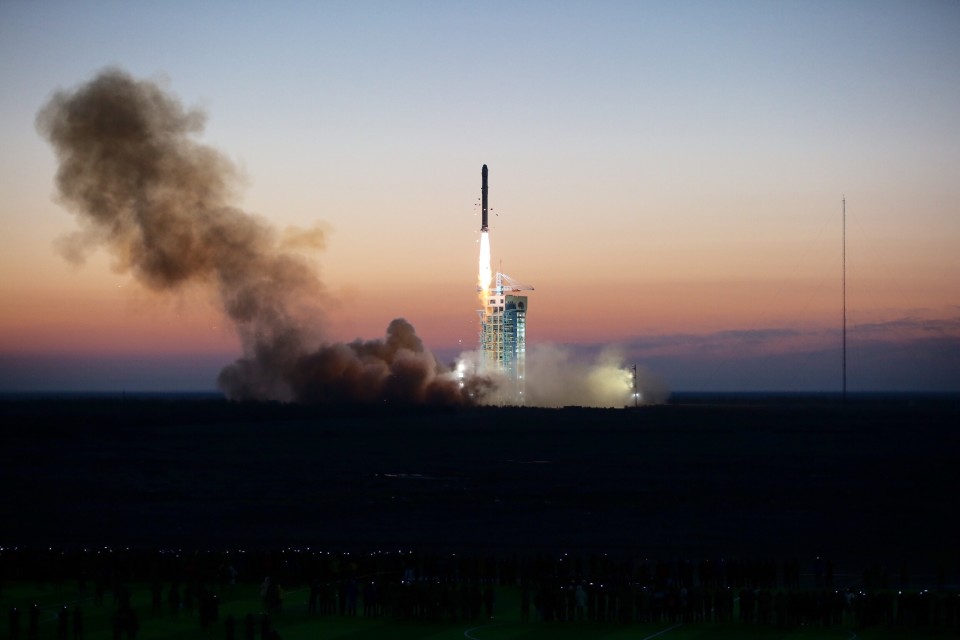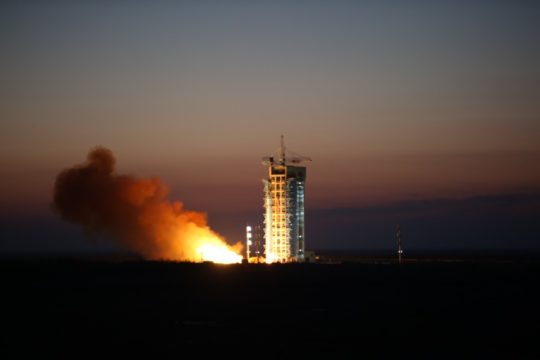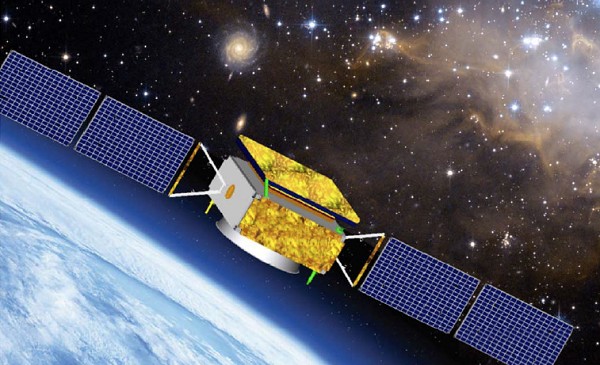China sent into space the country’s first space telescope to search for signals of dark matter on Thursday — invisible material that scientists say makes up most of the universe’s mass.

Xinhua Photo

Xinhua Photo
The Dark Matter Particle Explorer (DAMPE) Satellite, nicknamed “Wukong” after the Monkey King with penetrating eyes in the Chinese classical fiction “Journey to the West,” blasted off Thursday morning on a Long March 2D rocket from the Jiuquan Satellite Launch Center in northwest China’s Gansu Province.
It will enter a sun-synchronous orbit at a height of 500 kilometers (310 miles) to observe the direction, energy, and electric charge of high-energy particles in space.
From there, scientists hope the 1.9-ton desk-sized satellite will help lift the “invisible cloak” on dark matter and shine more light on the hypothetical mass.
China is to launch its first dark-matter exploration satellite…Video: China is set to launch its first dark matter exploration satellite on Thursday. The satellite is designed to detect electrons and photons with unprecedented energy resolution in order to identify possible dark matter signatures. Read more: https://america.cgtn.com/?p=102093
Posted by CCTV America on Tuesday, December 15, 2015
Dark matter, which does not emit or reflect enough electromagnetic radiation to be observed directly, is one of the biggest mysteries of modern science.
Theorized by scientists who could not understand missing mass and strangely-bent light in faraway galaxies, dark matter has become widely accepted in the physics community even though its existence has never been concretely proven.
Scientists now believe only around 5 percent of the total mass-energy of the known universe is made up of ordinary matter, whereas dark matter and dark energy make up the rest.
Knowing more about dark matter could give humanity a clearer idea about the past and future of galaxies and the universe, and would be revolutionary for the world of physics and space science.
With the new DAMPE satellite, scientists will look for evidences of dark matter annihilation or decay.
Wukong will scan the space in all directions in the first two years and focus on sections where dark matter is most likely to be observed afterward.
More than 100 scientists will study the data sent back by Wukong. Initial findings are expected to be published in the second half of 2016.
Story by CCTV.
 CGTN America
CGTN America A Long March 2-D rocket carrying the Dark Matter Particle Explorer Satellite blasts off at the Jiuquan Satellite Launch Center in Jiuquan, northwest China’s Gansu Province, Dec. 17, 2015. The satellite, nicknamed “Wukong” after the Monkey King with penetrating eyes in the Chinese classical fiction “Pilgrimage to the West”, is the country’s first space telescope in a fresh search for smoking-gun signals of dark matter, invisible material that scientists say makes up most of the universe’s mass. (Xinhua/Jin Liwang) (ry)
A Long March 2-D rocket carrying the Dark Matter Particle Explorer Satellite blasts off at the Jiuquan Satellite Launch Center in Jiuquan, northwest China’s Gansu Province, Dec. 17, 2015. The satellite, nicknamed “Wukong” after the Monkey King with penetrating eyes in the Chinese classical fiction “Pilgrimage to the West”, is the country’s first space telescope in a fresh search for smoking-gun signals of dark matter, invisible material that scientists say makes up most of the universe’s mass. (Xinhua/Jin Liwang) (ry)

